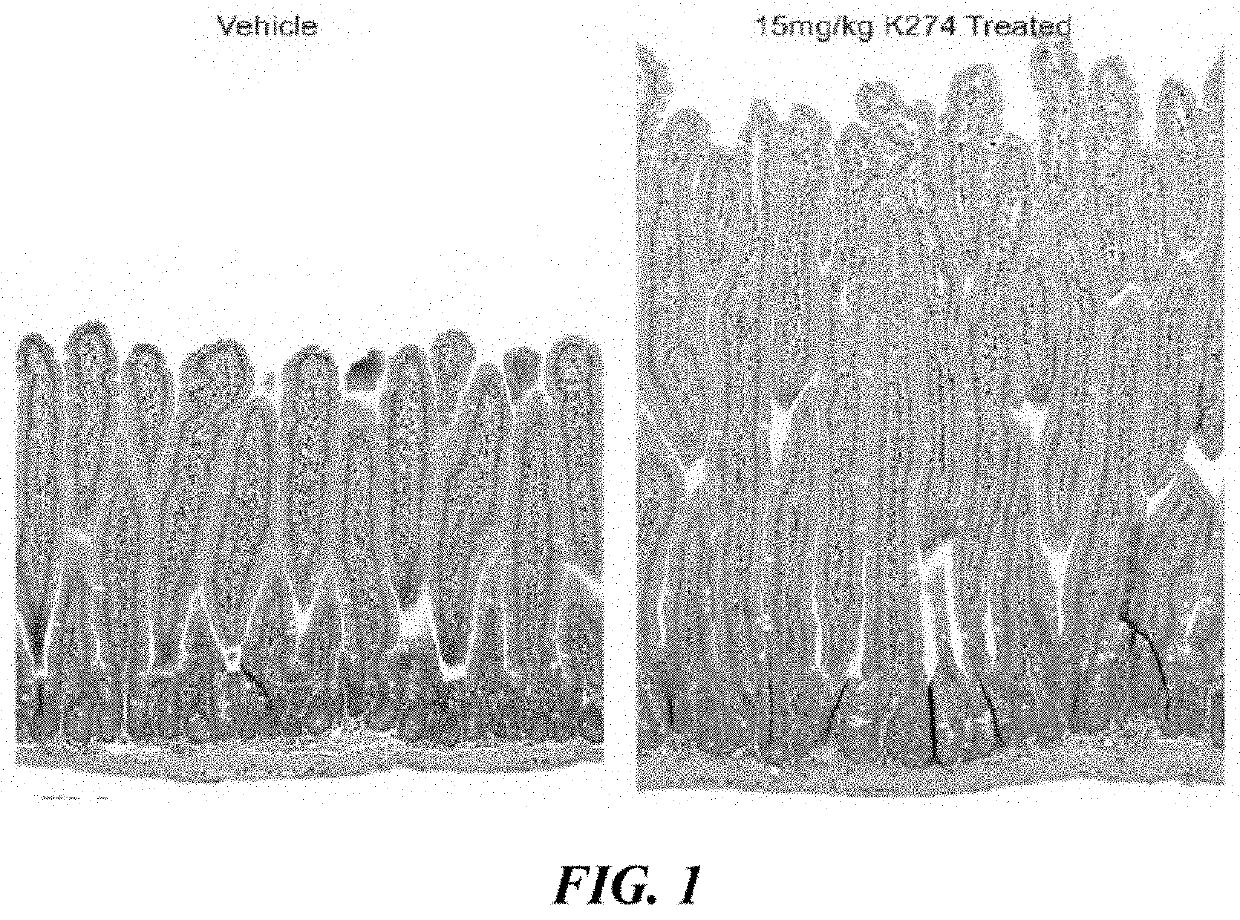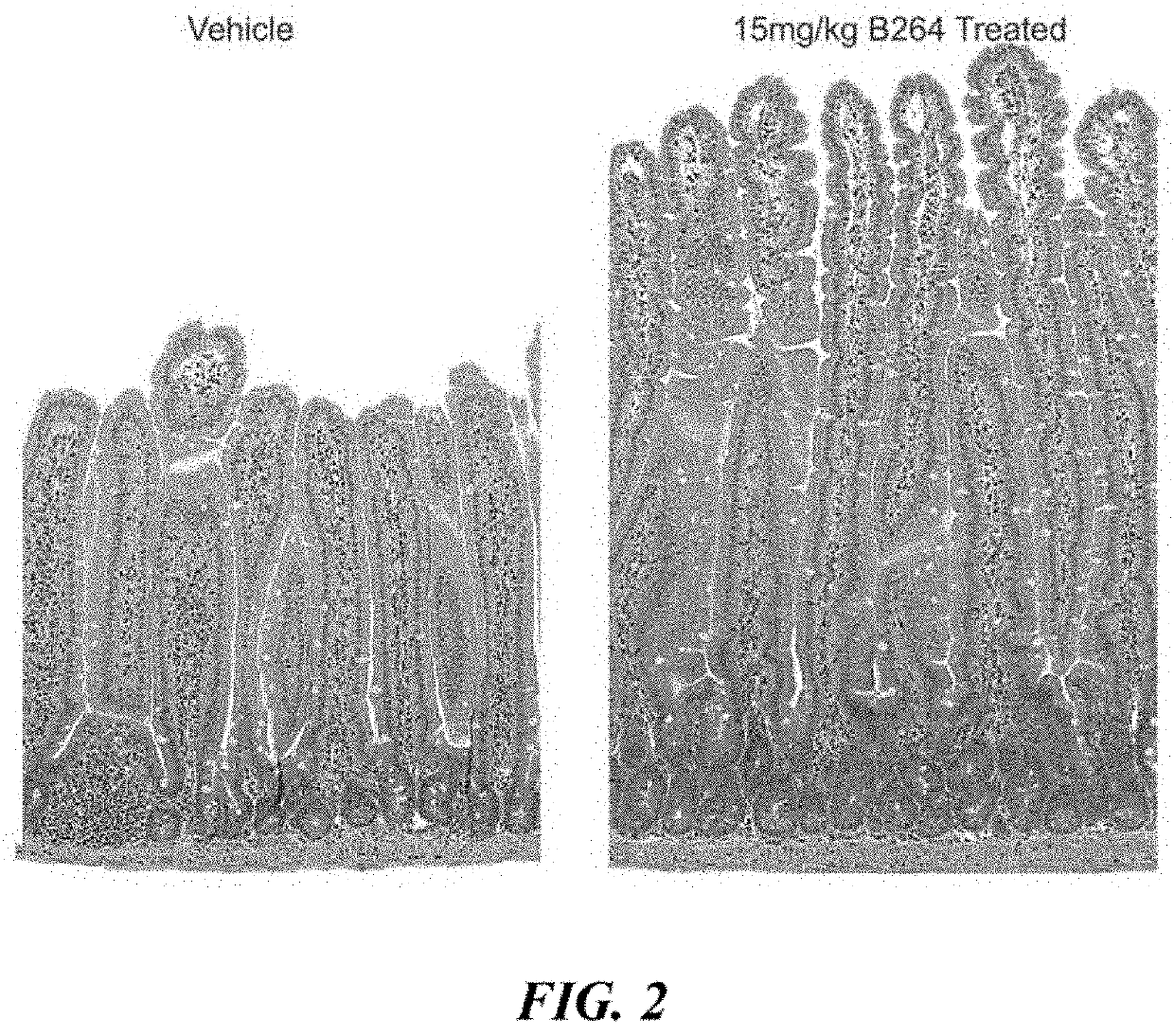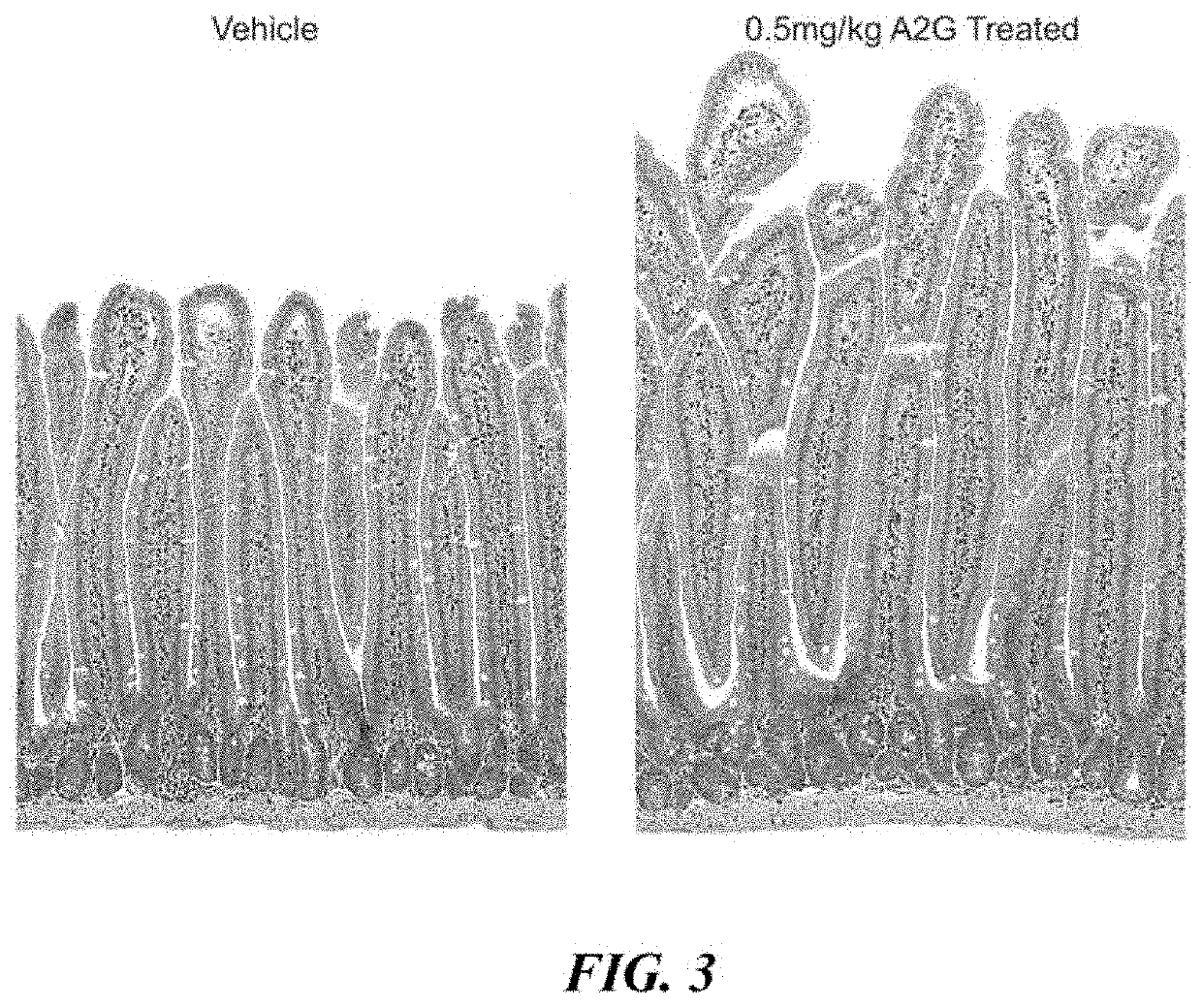Glp-2 analogs and peptibodies for administration before, during or after surgery
a technology of glp-2 and analogs, applied in the direction of peptide/protein ingredients, drug compositions, metabolic disorders, etc., can solve the problems of malnutrition, dehydration and weight loss, etc., to increase intestinal wet weight absorption, increase intestinal energy absorption, and reduce fecal weight wet
- Summary
- Abstract
- Description
- Claims
- Application Information
AI Technical Summary
Benefits of technology
Problems solved by technology
Method used
Image
Examples
example 1
Study of Villi Length and Crypt Depth in GLP-2 Peptibody B264
[0183]Various doses of GLP-2 peptibody B264 were analyzed to assess the pharmacodynamic plateau, with the primary endpoint a measurement of the small intestinal weight relative to the total body weight and a histology study of the length of villi. 11 groups of six female CD-1 mice each were formed. The groups are summarized in Table 1 below.
TABLE 1Dose DoseStudy GroupTest agent(mg / kg)RegimenDuration 1Vehicle 10BID, 15 days14 days 2GLP-2[A2G]0.025Q3D, 15 days14 days 3GLP-2[A2G]0.25Q3D, 15 days14 days 4Vehicle 20Q3D, 15 days14 days 5Vehicle 20Q3D, 21 days14 days 6GLP-2 peptibody0.45Q3D15 daysB264 7GLP-2 peptibody1.5Q3D over 15 daysB26414 days 8GLP-2 peptibody4.5Q3D over 15 daysB26414 days 9GLP-2 peptibody15Q3D over 15 daysB26414 days10GLP-2 peptibody4.5Q3D over 18 daysB26414 days11GLP-2 peptibody4.5Q3D over 21 daysB26414 days
[0184]For histology, four micron paraffin sections were prepared for H&E and Ki67 IHC staining. After...
example 2
ation of a GLP-2 Peptibody to a Patient Before Surgery
[0185]A patient with Crohn's disease is scheduled to undergo surgery for small intestine resection in one month. The patient is expected to have a small intestine of 150 cm length after the surgery. The small intestine is expected to remain in continuity with the colon. The patient is expected to develop a mild case of short bowel syndrome and need parenteral nutrition support. As part of a treatment plan to reduce inflammation after surgery, an issue with Crohn's disease, and to minimize the need for parenteral nutrition support, a GLP-2 peptibody will be administered subcutaneously to the patient each week at a dose of about 1.4 mg / kg. The patient will be monitored for any side effects relating to digestion and intestinal absorption.
example 3
ation of a Teduglutide to a Patient Before Surgery
[0186]A patient with Crohn's disease is scheduled to undergo surgery for small intestine resection in one month. The patient is expected to have a small intestine of 150 cm length after the surgery. The small intestine is expected to remain in continuity with the colon. The patient is expected to develop a mild case of short bowel syndrome and need parenteral nutrition support. As part of a treatment plan to reduce inflammation after surgery, an issue with Crohn's disease, and to minimize the need for parenteral nutrition support, 0.05 mg / kg h(Gly2)GLP-2 will be administered intravenously to the patient each day. The patient will be monitored for any side effects relating to digestion and intestinal absorption.
PUM
| Property | Measurement | Unit |
|---|---|---|
| concentration | aaaaa | aaaaa |
| concentration | aaaaa | aaaaa |
| concentration | aaaaa | aaaaa |
Abstract
Description
Claims
Application Information
 Login to View More
Login to View More - R&D
- Intellectual Property
- Life Sciences
- Materials
- Tech Scout
- Unparalleled Data Quality
- Higher Quality Content
- 60% Fewer Hallucinations
Browse by: Latest US Patents, China's latest patents, Technical Efficacy Thesaurus, Application Domain, Technology Topic, Popular Technical Reports.
© 2025 PatSnap. All rights reserved.Legal|Privacy policy|Modern Slavery Act Transparency Statement|Sitemap|About US| Contact US: help@patsnap.com



